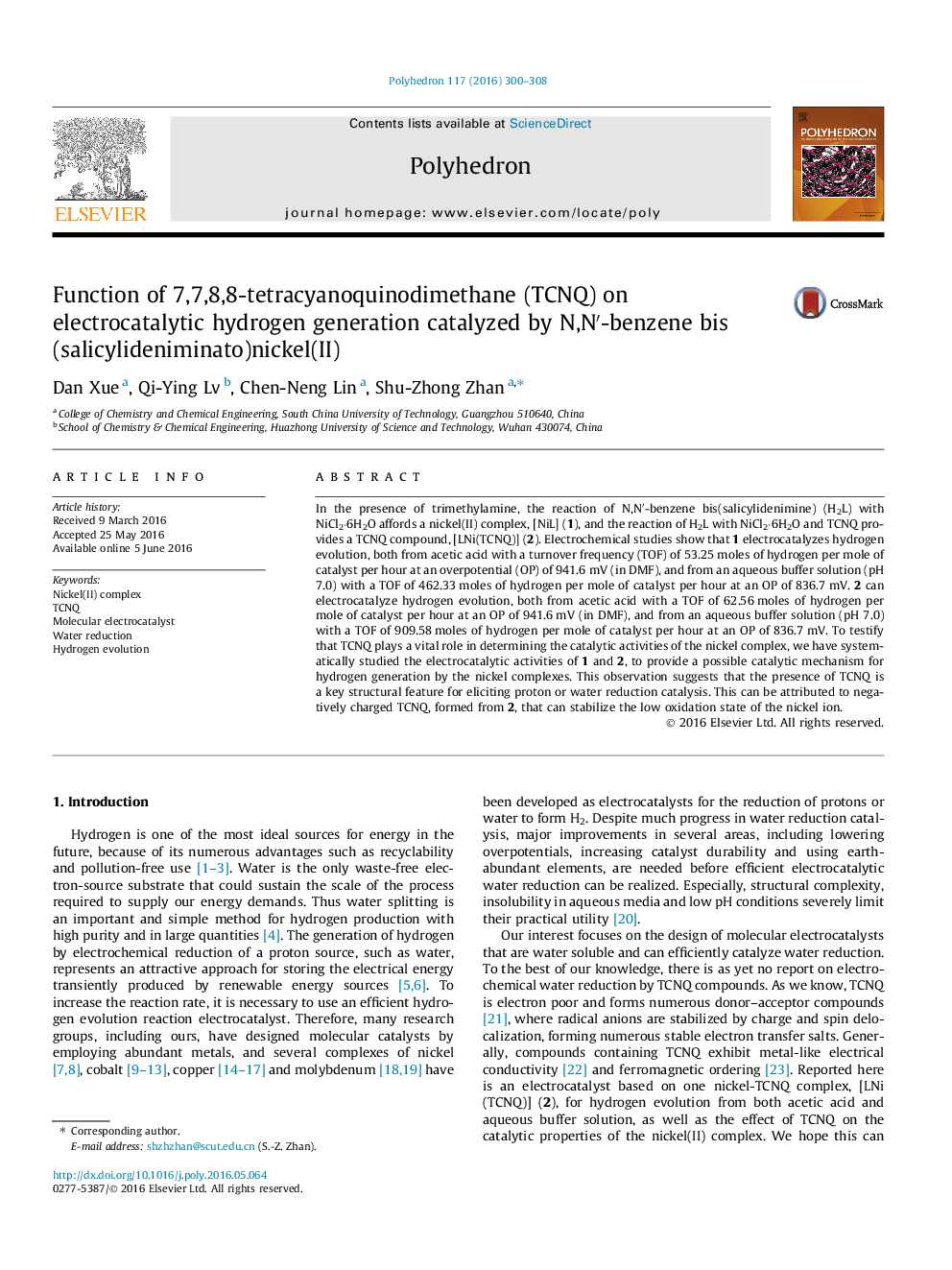| کد مقاله | کد نشریه | سال انتشار | مقاله انگلیسی | نسخه تمام متن |
|---|---|---|---|---|
| 1336210 | 1500223 | 2016 | 9 صفحه PDF | دانلود رایگان |

In the presence of trimethylamine, the reaction of N,N′-benzene bis(salicylidenimine) (H2L) with NiCl2·6H2O affords a nickel(II) complex, [NiL] (1), and the reaction of H2L with NiCl2·6H2O and TCNQ provides a TCNQ compound, [LNi(TCNQ)] (2). Electrochemical studies show that 1 electrocatalyzes hydrogen evolution, both from acetic acid with a turnover frequency (TOF) of 53.25 moles of hydrogen per mole of catalyst per hour at an overpotential (OP) of 941.6 mV (in DMF), and from an aqueous buffer solution (pH 7.0) with a TOF of 462.33 moles of hydrogen per mole of catalyst per hour at an OP of 836.7 mV. 2 can electrocatalyze hydrogen evolution, both from acetic acid with a TOF of 62.56 moles of hydrogen per mole of catalyst per hour at an OP of 941.6 mV (in DMF), and from an aqueous buffer solution (pH 7.0) with a TOF of 909.58 moles of hydrogen per mole of catalyst per hour at an OP of 836.7 mV. To testify that TCNQ plays a vital role in determining the catalytic activities of the nickel complex, we have systematically studied the electrocatalytic activities of 1 and 2, to provide a possible catalytic mechanism for hydrogen generation by the nickel complexes. This observation suggests that the presence of TCNQ is a key structural feature for eliciting proton or water reduction catalysis. This can be attributed to negatively charged TCNQ, formed from 2, that can stabilize the low oxidation state of the nickel ion.
In the presence of trimethylamine, the reaction of N,N′-benzene bis(salicylidenimine) (H2L) with NiCl2·6H2O affords the nickel(II) complex, [NiL] (1). The introduction of TCNQ on [LNi] can improve the catalytic efficiency for hydrogen production from both acetic acid and a neutral buffer solution, as TCNQ− can stabilize a low oxidation state of nickel and the nickel complex with a more positive NiII/I redox potential exhibits higher activity for hydrogen generation.Figure optionsDownload as PowerPoint slide
Journal: Polyhedron - Volume 117, 15 October 2016, Pages 300–308